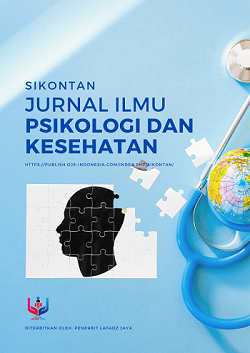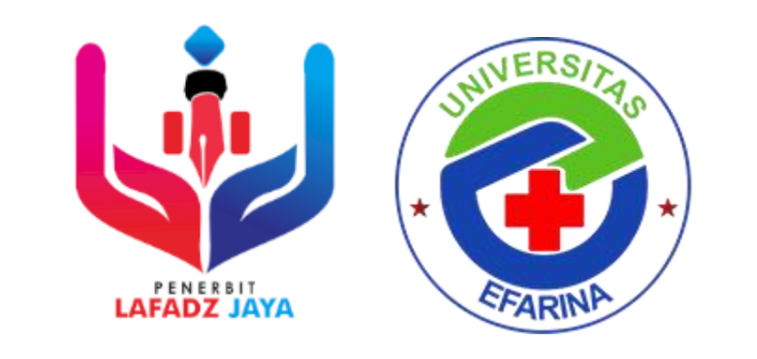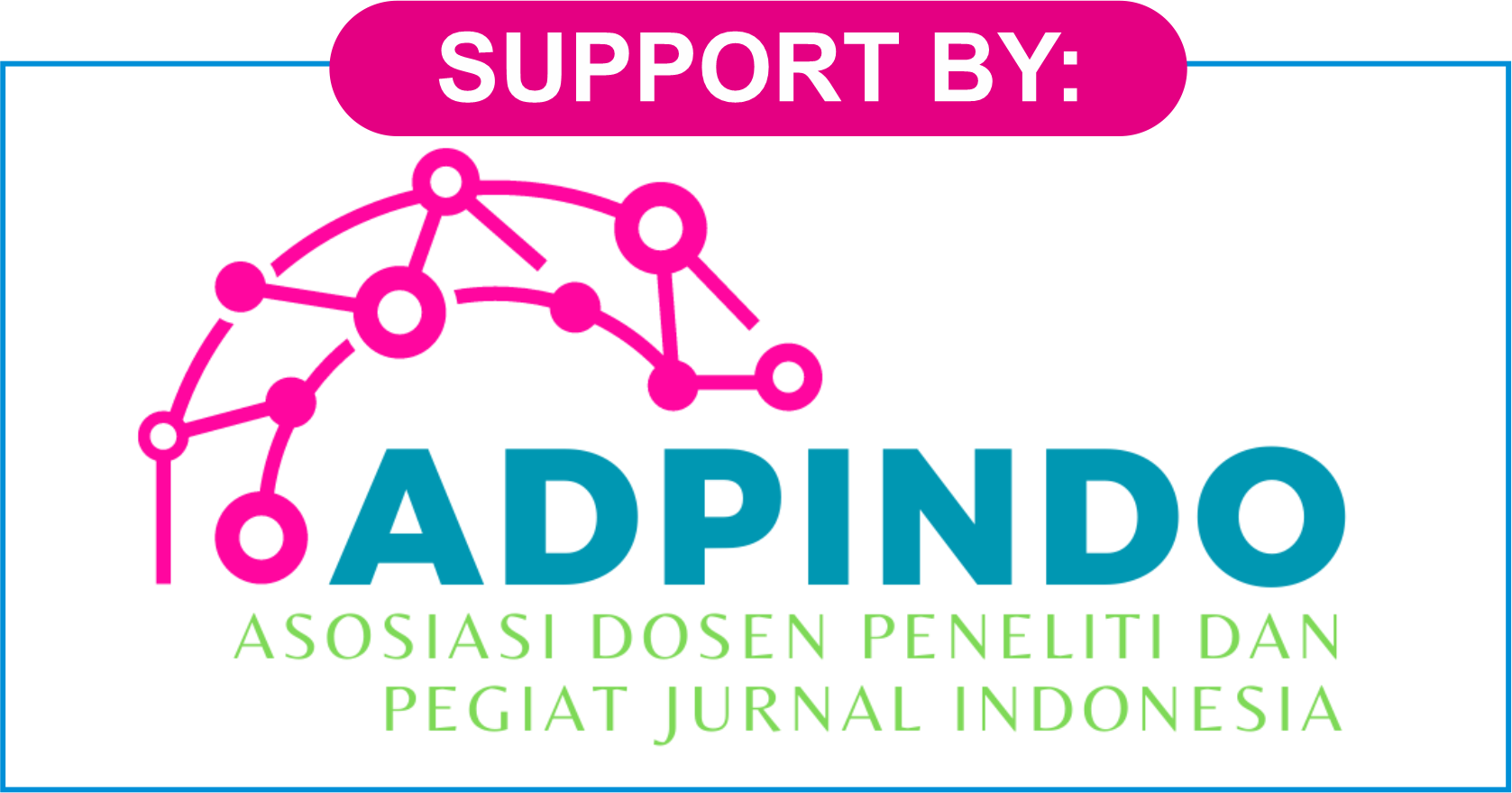DAMPAK GAYA KELEKATAN ORANG TUA DAN STIGMA DIRI TERHADAP INTENSI MENCARI BANTUAN REMAJA AKHIR
DOI:
https://doi.org/10.47353/sikontan.v3i2.2005Keywords:
late adolescence, parental attachment style, self-stigma, help-seeking intentionAbstract
Help-seeking intentions are antecedents of adolescents' decisions to seek help. The existence of barriers to accessing help lowers adolescents' intention, which results in low utilization of health services. Therefore, this study aims to determine the impact of parental attachment style and self-stigma on late adolescents' help-seeking intentions. The research design used quantitative methods, involving 172 participants aged 18–21 years. The data collection process applied the self-report questionnaire survey method, with measuring instruments such as the General Help-seeking Questionnaire, Self Stigma of Seeking Help Scale, and The Inventory of Parent and Peer Attachment-Revised. The data analysis method was applied with the covariate analysis method on Jamovi software version 2.3.28. Covariate analysis of parental attachment style with help-seeking intentions showed significant results, while the impact of self-stigma on help-seeking intentions showed insignificant results. Secure attachment style had the highest help-seeking intention, followed by anxious attachment style, and avoidant attachment style had the lowest help-seeking intention.
Downloads
References
Ainsworth, M. D. S. (1982). The development of infant-mother attachment. In In The beginning: Readings on Infancy (pp. 133-143). Columbia University Press.
Ainsworth, M. S. (1989). Attachments beyond infancy. American psychologist, 44(4), 709.
Aguirre Velasco, A., Cruz, I. S. S., Billings, J., Jimenez, M., & Rowe, S. (2020). What are the barriers, facilitators and interventions targeting help-seeking behaviours for common mental health problems in adolescents? A systematic review. BMC psychiatry, 20(1), 1-22.
Badan Penelitian dan Pengembangan Kesehatan Kementerian Kesehatan Republik Indonesia. (2018). Laporan Riset Kesehatan Dasar 2018. Jakarta.
Bowlby, J. (1982). Attachment and loss: retrospect and prospect. American journal of Orthopsychiatry, 52(4), 664.
Camara, M., Bacigalupe, G., & Padilla, P. (2017). The role of social support in adolescents: are you helping me or stressing me out?. International Journal of Adolescence and Youth, 22(2), 123-136.
Center for Reproductive Health, University of Queensland, & Johns Bloomberg Hopkins School of Public Health. (2022). Indonesia – National Adolescent Mental Health Survey (I-NAMHS): Laporan Penelitian. Pusat Kesehatan Reproduksi.
Cheng, H. L., McDermott, R. C., & Lopez, F. G. (2015). Mental health, self-stigma, and help-seeking intentions among emerging adults: An attachment perspective. The Counseling Psychologist, 43(3), 463-487.
Corrigan, P. (2004). How stigma interferes with mental health care. American psychologist, 59(7), 614.
Dahlia, R. ., Khairi, Z. ., Diniaty, A., Anwar, K., Ahmad Tohar, A., & Shofiah, V. (2023). Peran Citra Sekolah Dalam Memotivasi Orang Tua Memasukkan Anaknya Ke Sekolah Dasar Islam Terpadu (Sdit). Jurnal Ilmu Psikologi Dan Kesehatan (Sikontan), 2(1), 135–144. https://doi.org/10.47353/sikontan.v2i1.1270
Feeney, B. C., Cassidy, J., & Ramos-Marcuse, F. (2008). The generalization of attachment representations to new social situations: predicting behavior during initial interactions with strangers. Journal of personality and social psychology, 95(6), 1481.
Greenberg, M. T. (2009). The Inventory of Parent and Peer Attachment: Individual Differences and Their Relationship to Psychological Well-Being.
Gulliver, A., Griffiths, K. M., & Christensen, H. (2010). Perceived barriers and facilitators to mental health help-seeking in young people: a systematic review. BMC psychiatry, 10(1), 1-9.
Keresteš, G., Rezo, I., & Ajduković, M. (2019). Links between attachment to parents and internalizing problems in adolescence: The mediating role of adolescents’ personality. Current Psychology, 1-11.
Kessler, R. C., Amminger, G. P., Aguilar-Gaxiola, S., Alonso, J., Lee, S., & Üstün, T. B. (2007). Age of onset of mental disorders: a review of recent literature. Current opinion in psychiatry, 20(4), 359-364.
Liddle, S. K., Robinson, L., Vella, S. A., & Deane, F. P. (2021). Profiles of mental health help seeking among Australian adolescent males. Journal of Adolescence, 92, 34-45.
Loeb, E. L., Stern, J. A., Costello, M. A., & Allen, J. P. (2021). With (out) a little help from my friends: Insecure attachment in adolescence, support-seeking, and adult negativity and hostility. Attachment & Human Development, 23(5), 624-642.
Mikulincer, M., Birnbaum, G., Woddis, D., & Nachmias, O. (2000). Stress and accessibility of proximity-related thoughts: exploring the normative and intraindividual components of attachment theory. Journal of personality and social psychology, 78(3), 509.
Mikulincer, M., Shaver, P. R., & Pereg, D. (2003). Attachment theory and affect regulation: The dynamics, development, and cognitive consequences of attachment-related strategies. Motivation and emotion, 27, 77-102.
Mikulincer, M., Dolev, T., & Shaver, P. R. (2004). Attachment-related strategies during thought suppression: ironic rebounds and vulnerable self-representations. Journal of personality and social psychology, 87(6), 940.
Mikulincer, M., & Shaver, P. R. (2012). An attachment perspective on psychopathology. World Psychiatry, 11(1), 11-15.
Muh Rizky Dita Octavian, & Ika Yuniar Cahyanti. (2023). Gambaran Kompetensi Interpersonal Remaja Dari Orang Tua Yang Mengalami Perceraian. Jurnal Ilmu Psikologi Dan Kesehatan (Sikontan), 1(3), 215–224. https://doi.org/10.47353/sikontan.v1i3.541
Radez, J., Reardon, T., Creswell, C., Lawrence, P. J., Evdoka-Burton, G., & Waite, P. (2021). Why do children and adolescents (not) seek and access professional help for their mental health problems? A systematic review of quantitative and qualitative studies. European child & adolescent psychiatry, 30, 183-211.
Rickwood, D., & Thomas, K. (2012). Conceptual measurement framework for help-seeking for mental health problems. Psychology research and behavior management, 173-183.
Sánchez Queija, M. I., & Oliva Delgado, A. (2015). A longitudinal view of peer-friendship relations and their association with parental attachment bonds. International Journal of Psychology and Psychological Therapy, 15 (2), 259-272.
Schnyder, N., Panczak, R., Groth, N., & Schultze-Lutter, F. (2017). Association between mental health-related stigma and active help-seeking: systematic review and meta-analysis. The British Journal of Psychiatry, 210(4), 261-268.
Shaffer, P. A., Vogel, D. L., & Wei, M. (2006). The mediating roles of anticipated risks, anticipated benefits, and attitudes on the decision to seek professional help: An attachment perspective. Journal of Counseling Psychology, 53(4), 442.
Sugiyono, S. (2022). Metode Penelitian Kuantitatif Kualitatif Dan R & D edisi 2 Cetakan 29. Bandung: CV Alfabeta.
Vidourek, R. A., King, K. A., Nabors, L. A., & Merianos, A. L. (2014). Students' benefits and barriers to mental health help-seeking. Health Psychology and Behavioral Medicine: An Open Access Journal, 2(1), 1009-1022.
Vogel, D. L., Wade, N. G., & Haake, S. (2006). Measuring the self-stigma associated with seeking psychological help. Journal of counseling psychology, 53(3), 325.
Wilson, C. J., Deane, F. P., Ciarrochi, J., & Rickwood, D. (2005). Measuring help-seeking intentions: Properties of the general help-seeking Questionnaire. Canadian Journal of Counselling, 39(1), 15–28.
Zhao, W., Young, R. E., Breslow, L., Michel, N. M., Flett, G. L., & Goldberg, J. O. (2015). Attachment style, relationship factors, and mental health stigma among adolescents. Canadian Journal of Behavioural Science/Revue canadienne des sciences du comportement, 47(4), 263.
Downloads
Published
How to Cite
Issue
Section
License
Copyright (c) 2024 Rizka Arista Sabilla, Atika Dian Ariana

This work is licensed under a Creative Commons Attribution 4.0 International License.











